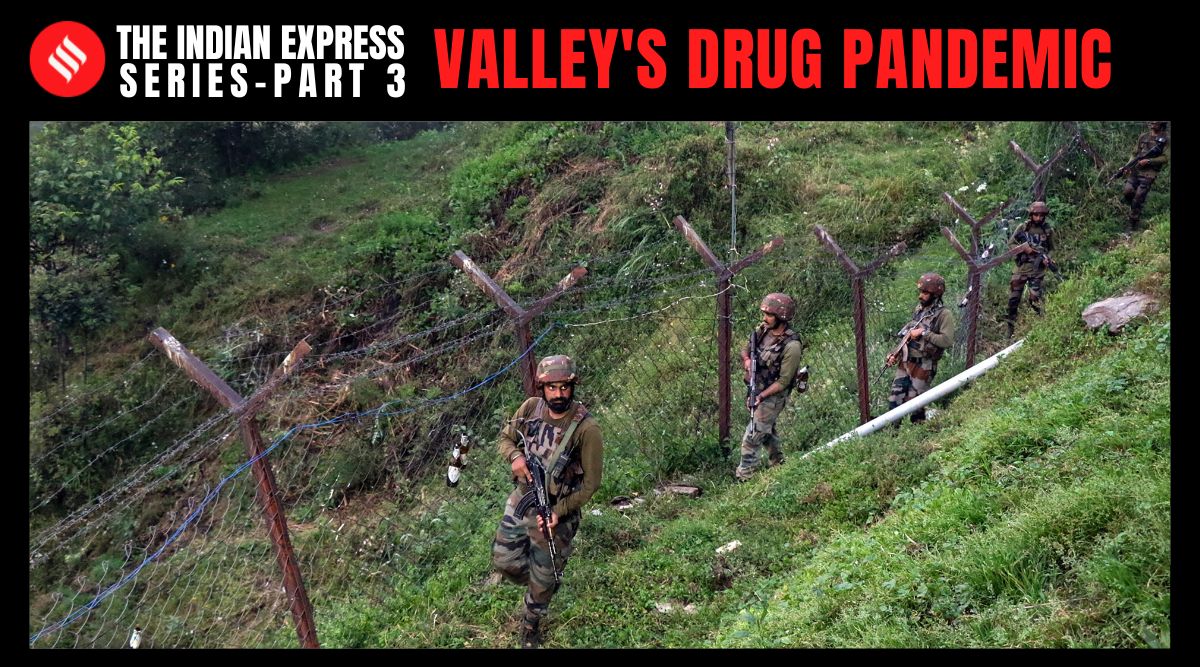From the sky, drones from Pakistan that drop drugs across the border; on the ground, a distribution model akin to a multi-level marketing scheme where an addict ropes in more addicts; consignments ferried from neighbouring states; prescription drugs sold against cancelled licences; and opioids procured from the darknet.
These are the myriad supply lines that feed and fuel the drug pandemic in Jammu and Kashmir which has stretched the public health system to its limits and poses a set of unprecedented challenges to security agencies, an investigation by The Indian Express has found. Analysing police records of seizure and arrests, both at an all-time high, and interviews with top officials also reveals that, in many cases, the drug trade and terror networks also run parallel — and often intersect.

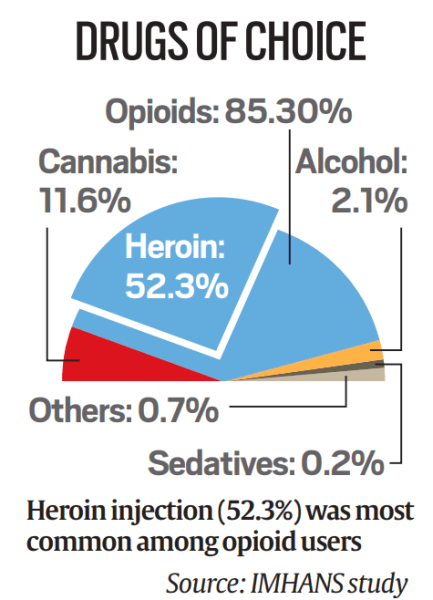 What drugs are the addicts in Jammu and Kashmir using?
What drugs are the addicts in Jammu and Kashmir using?
A recent, illustrative example is from June 9 when, trying to flee Rangoor village near the international border, three alleged narcotic smugglers from Punjab were intercepted and caught by the Jammu & Kashmir police. In their alleged possession was heroin weighing 2.8 kg, a pistol, Rs 93,000, and four high-end phones.
Barely three days later, Punjab Police nabbed five of their accomplices with alleged “drug proceeds” worth Rs 40 lakh, a Glock, a .32 bore pistol, and 15 gm of heroin.
The men, investigators say, were part of an international “narco-terror module” with links in Pakistan and Dubai, and had been receiving drugs dropped by drones from Pakistan in areas near the international border in J&K’s Samba district.
This, according to officials, is not an isolated incident but a veritable template.
Express Investigation – Part 1 | One addict walks into Srinagar OPD every 12 minutes: Valley’s drug pandemic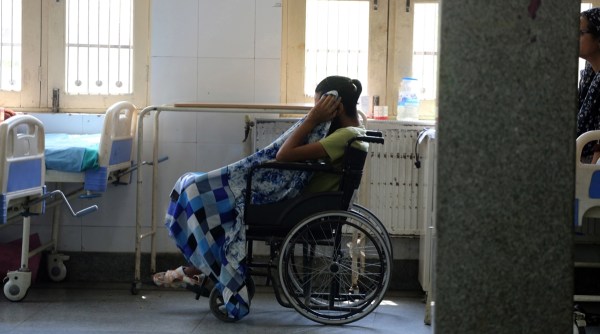 At the drug de-addiction centre at Srinagar’s SMHS Hospital, the largest in the Valley. (Express Photo: Shuaib Masoodi)
At the drug de-addiction centre at Srinagar’s SMHS Hospital, the largest in the Valley. (Express Photo: Shuaib Masoodi)
The plains of Jammu division have emerged as a major entry point for drugs into the state. In fact, since 2019, state police and other security forces have seized over 700 kg of heroin valuing roughly Rs 1,400 crore in the international market.
This is apart from the 2,500 kg of charas and nearly 1 lakh kg of opium derivatives seized across the union territory in the same period, according to police records.
Indeed, the use of narcotics to fund terrorism is a now a significant cause of concern for police and security agencies, with senior officials ringing a note of caution that money which comes from the sale of drugs is being used to fund terrorism not only in J&K but also to foment trouble in neighbouring Punjab.
Express Investigation – Part 2 | A daughter’s fight, a son lost to drugs: families in J&K battle death and despair
In June, the Army confirmed that instances of narcotics, arms and ammunition coming from across the border were “growing”, and that “troops were undertaking operations with utmost care, safety and with zero collateral damage to the local population”. “Millions of rupees worth of drugs and narcotics have been recovered this year,” it added.
In an interview to The Indian Express, Director General of J&K Police Dilbag Singh said that the drug menace is a more serious threat than militancy but both also draw on each other: “Pakistan agencies, which were earlier in the business of terrorism, have taken it up as a matter of policy to use drugs to fund terror as well as to mix terror with social crime to harm society and punish the people of J&K for choosing peace over terror. It was done in Punjab in the same way and while the state’s militancy died a long time ago, the problem of drugs is as threatening as ever. We are moving in the same direction.”
Terror and drugs: networks in parallel
Often, drugs and weapons are smuggled from Pakistan together, said a senior official. “The weapons are delivered to militants and part of the narcotics proceeds are returned to “handlers sitting across the border and the rest shared by the peddlers.”
Said Singh: “The major source… are some of the drug lords and drug mafia in Afghanistan. From there, it travels to Pakistan and from there to J&K. The unfortunate part is that it is being smuggled through militant outfits and it is not too far-fetched to attach this to (Pakistan’s) ISI. Anyone can be given money and made a courier… The ISI is keenly interested in this.”
There are minefields at various places along the LoC as well as a robust barbed wire fence.
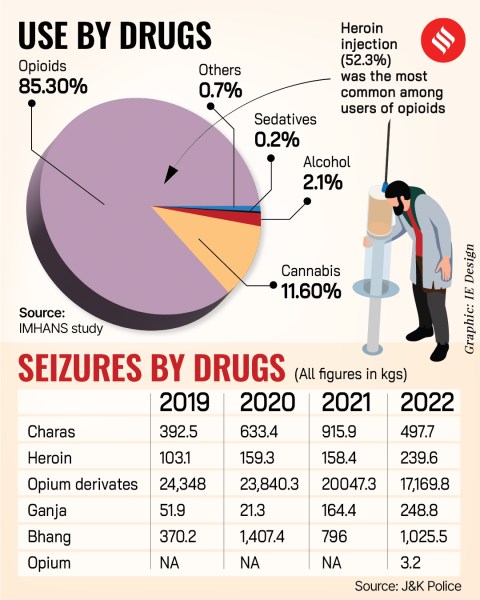 A comparative look at the number of new and returning patients at the De-addiction Centre in Srinagar between 2021-2023. (IE Graphics)
A comparative look at the number of new and returning patients at the De-addiction Centre in Srinagar between 2021-2023. (IE Graphics)
To avoid casualties, “elements in Pakistan started sending militants, weapons, explosives and narcotics through cross-border underground tunnels dug up along the international border in the plains of Jammu”, said a senior officer of the Anti-Narcotics Task Force (ANTF), a specialized unit of Jammu and Kashmir Police.
But after the BSF started undertaking anti-tunnelling drills at frequent intervals, they tried a different approach – dropping consignments of weapons, explosives, money and narcotics through drones. Now, with security forces having put in place an anti-drone system, they have fallen back on smugglers and even rope in militants that plug into a network of couriers in villages near the border.
In May this year, police and the Army arrested four people from Kupwara and seized 8 kg of heroin and Rs 5 lakh in cash. According to the police, the consignment was sent by Pakistan-based Lashkar-e-Taiba handlers Manzoor Ahmad Mir and Asar Mir, who had crossed over to Pakistan-occupied Kashmir in early 1990s.
Also Read | Smugglers now bringing drugs into Punjab through Jammu and Kashmir: Police official
Not just a destination, Jammu and Kashmir is also a transit point for drugs coming from Afghanistan. In November 2021, police at Jammu’s Jhajjar Kotli area seized 52 kg of heroin worth Rs 100 crore from a truck coming from the Valley. Officers believe the consignment originated from Afghanistan, and special markings on the packets indicated the final destination was outside India — countries in Africa, as well as the Gulf and Europe.
Charas that has its origin in Kashmir is in demand in Maharashtra, Gujarat and Surat. It also makes its way to the Middle East, especially Qatar, an officer pointed out.
Prescription & pharmacy behind addiction
On June 20 this year, the Drug and Food Control office in Kashmir raided a courier agency in Srinagar and seized 23,000 tablets of tapentadol. Though prescribed as an opioid to relieve acute pain, tapentadol has emerged as the psychotropic drug of choice for addicts in the Valley, making its foray into the market through illegal channels from outside the state.
A 2022-2023 study by the Institute of Mental Health and Neurosciences (IMHANS) Kashmir has revealed that over 90 percent of drug abusers in the Valley are addicted to opioids – both plant-based as well as synthetic drugs.
“If we talk about the medicinal opioids, all of it comes from outside the state, especially Delhi and Himachal Pradesh,” said Nisar Ahmad Bakshi, Deputy Superintendent of Police, ANTF. “Peddlers or carriers take advantage of loopholes in the mechanism to procure these drugs in large quantities”.
Two years ago, the police seized thousands of bottles of codeine phosphate in Srinagar, with investigations revealing that the drug was procured on a licence that had already been cancelled by the Drug and Food Control department.
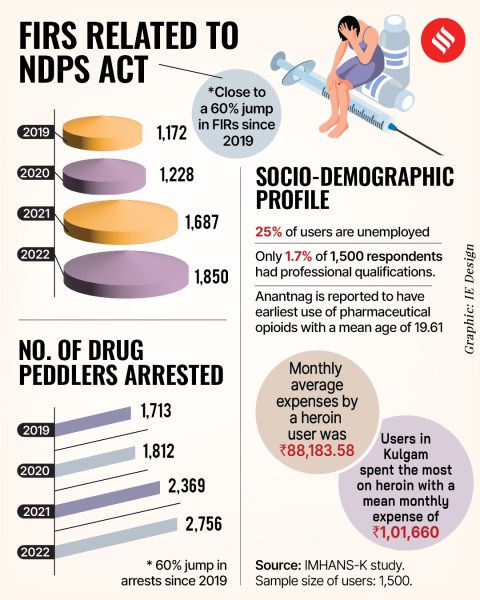 A socio-demographic profile of users in the valley shows that 25 per cent are unemployed. There has also been a steady uptick in the arrest of drug peddlers over the years. (IE Graphics)
A socio-demographic profile of users in the valley shows that 25 per cent are unemployed. There has also been a steady uptick in the arrest of drug peddlers over the years. (IE Graphics)
“For a pharma company or its marketer, there is no mechanism to check if the licence has been cancelled or if it is valid,” Bakshi said. “We need to have a mechanism wherein this can be checked online.”
“There is easy money in this. If someone buys these psychotropic drugs for Rs 10 lakh, in a week or so he earns another Rs 10 lakh from it,” said Bakshi. “For example, if a bottle of codeine phosphate costs Rs 100, the wholesaler sells it to a reseller at Rs 200 per bottle, and it is sold to a drug abuser at Rs 300 per bottle.”
Jammu and Kashmir Drug Controller Lotika Khajuria told The Indian Express that the department recently sealed a wholesale drug store in Jammu’s Rajouri and cancelled its licence. “We observed he was only dealing in tapentadol tablets,” she said.
Also Read | Drug menace bigger threat than militancy, we’re going Punjab way: J&K DGP Dilbag Singh
The mushrooming of online medical stores across the country has exacerbated the crisis since some drugs can be bought in bulk by showing fake prescriptions. “All they ask for is to upload a doctor’s prescription and that’s not a difficult job for anyone,” said an official of the Drug and Food Control department.
J&K as a spoke in drug hub
Plant-based opioids follow a different route, said a senior ANTF official. These are either cultivated in the Valley or come from Pakistan, and then make their way to the rest of India. “Inter-state gangs peddle narcotics. Around 70 percent are transported outside J&K while 30 percent are utilised locally,” said an official.
These narcotics, primarily heroin, have a flourishing market outside the state, particularly Punjab, Gujarat and Mumbai.
“A gram of heroin is sold for around Rs 3,000 in the Valley but between Rs 5,000-6,000 in other states,” said DSP Bakshi.
He also highlighted how the “darknet” — an encrypted portion of the internet that can only be accessed by select individuals — is becoming a platform to source narcotics and psychotropic drugs. “You name a drug and you will find it on the dark web,” he said. “But that is beyond our domain. Neither do we have the permission nor the resources to get into this.”
Over the past year, the J&K Police have been running a campaign against drug peddling, though the going has been tough.
Most Read 1Chandrayaan-3 mission: Dawn breaks on Moon, all eyes on lander, rover to wake up 2As Indo-Canadian relations sour, anxiety grips Indian students, residents who wish to settle in Canada 3Karan Johar says Sanjay Leela Bhansali did not call him after Rocky Aur Rani: ‘He’s never called me but…’ 4Shubh’s tour in India cancelled: Why is the Canada-based singer facing the music? 5Gadar 2 box office collection day 40: Hit by Shah Rukh Khan’s Jawan onslaught, Sunny Deol movie ends BO run with Rs 45 lakh earning
In December last year, police busted a drug trafficking racket in Kupwara that even included five policemen. In April this year, the Home department ordered the transfer of over 20 Deputy Superintendents of Police, with sources saying some of them were “not acting tough on drug trafficking”.
Police are also grappling with the challenges of trying to dismantle a distribution model that resembles a multi-level marketing scheme. Under this, drug peddlers identify a chronic drug abuser and ask him to rope in four more buyers. When they buy from him, this person gets his share of drugs free as commission, police said.
Also ReadFinCEN Files — On US radar: Dawood Ibrahim’s financier, his laundering, f…IE100: The list of most powerful Indians in 2021Drug menace bigger threat than militancy, we’re going Punjab way: J&K DGP…After ‘downgrade’ last year, MEA sent Speaker’s office talk points on dem…
“When a peddler sees that an abuser is chronically addicted but has no money to buy drugs, they make him this offer,” said a police officer. “This way, drug peddlers keep themselves away from the police eye while simultaneously expanding their network.”
© The Indian Express (P) Ltd


